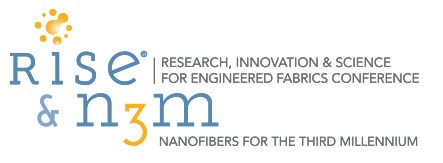
 Robert A. Monticello, PhD
Robert A. Monticello, PhD
International Antimicrobial Council Technology Center
Robert A. (Bob) Monticello received a B.S. in Microbiology from Michigan State University and a M.S. in Molecular Biology from Western Michigan University. He obtained his Ph.D. in Biochemistry and Molecular Medicine at the Wayne State University Medical School in Detroit, Michigan and completed a Post-Doctoral Fellowship at the Wayne State University Department of Molecular Medicine in Human Gene Therapy. Dr. Monticello has been active in the antimicrobial textile industry for over 20 years and is currently the Senior Technical Advisor for the International Antimicrobial Council. Dr. Monticello has presented on antimicrobial and antiodor agents and treated articles in over 20 countries and is an active member of AATCC RA31, ASTM E35.15, IBRG Committee on Textiles, and is a consultant for the OECD Task Force on Biocides
Tuesday 2:00pm - 4:00pm
Hygiene Session
Recent Developments in Measuring Antimicrobial and Antiodor Properties on Treated Nonwoven Textiles
Abstract: The use of antimicrobial agents as preservatives for various materials has been around for decades. Recently, a variety of antimicrobial agents and combination technologies have been added to textile substrates for the prevention of bacterial odor and for the control of microbial deterioration on nonwoven products. Antimicrobial and antiodor agents can be very different in their functionality, mode of action, their human and environmental health profiles, and their ability to actually achieve the desired end-use performance. There are a wide range of methods available to examine the interaction of micro organisms and the odors associated with them on nonwovens. Many of these methods are used to look at their resistance to deterioration by microbial growth and the ability of biocidal treatments to prevent it. Others are attempting to measure the prevention of microbial growth on textiles in order to control odor or simply measuring the entrapment of odor causing agents. Combining antimicrobial active ingredients and products specific for the absorption of odor molecules is way to control both traditional forms of odor on textiles. These combinations can bring added challenges in the manufacturing and finishing of these products and these compatibilities must be understood.
This presentation provides a critical review of current antimicrobial technologies and combination technologies that are currently used to provide odor control on nonwoven textiles. It will examine the suitability of various test methods for evaluating product function. It provides examples of extended study protocols and modifications of current test methods that can be used to assess the performance of treated textiles in odor control applications. The durable activity of commercially available antimicrobial polymeric systems and combination technologies will be used as examples of measured antimicrobial performance using several different testing methods.

